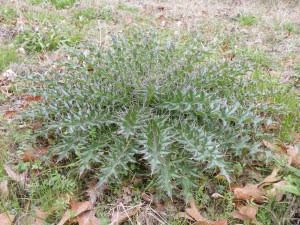Information on Thistles from Mario Villarino

[adning id=”33097″]
As I was visiting landowners recently, I noticed the presence of thistles in our county. Thistles are an interesting introduced plant. Many are biennial (coming back every other year) and others return every year. During my recent mowing efforts earlier on the week, I also noticed thistles in my lawn. Many thistles are valued as nectar producers for pollinator insects, and thus have a significant value for wildlife, however, according to Dr. Vannessa Olsen, Texas A&M AgriLife Extension Forage Specialist, If left uncontrolled, thick thistle stands can reduce grazing and result in less forage production. A single thistle plant can produce at least 4,000 seeds, which increases the chance for higher thistle populations in the pasture the following year. Consequently, management practices need to be conducted prior to flower formation for effective thistle control. Even if thistles have not infested your pasture in the past, it is ideal that your pastures are scouted in late fall through mid-spring (November to March) to ensure that thistles do not get out of control. New infestations are easier to manage than large-scale populations. Although there are at several different species of thistle in Texas, most are closely related and control recommendations will not differ. Best time to control with a herbicide is when thistles are in the rosette stage. The rosette stage is when the thistle forms a low-growing ring of leaves. As they mature they are harder to control and may require higher rates of herbicide to have effective control.

Thistle in rosette stage
Select Herbicide Options:
Weedmaster, 2, 4-D, GrazonNext, Remedy, PastureGard, Cimarron Max (for bermudagrass pastures, will control bahiagrass)
REMEMBER: THE LABEL IS THE LAW! Always read the pesticide label before using.
For more information related to this or any other agricultural topic, please contact the Hopkins County Extension Office at903-885-3443 or email me at m-villarino@tamu.edu.
| Mario Villarino DVM, Ph.D.
Hopkins County Extension Agent for Ag and NR 1200B Houston Street Sulphur Springs, Texas 75482 |
[adning id=”33207″]
[adning id=”33207″]













